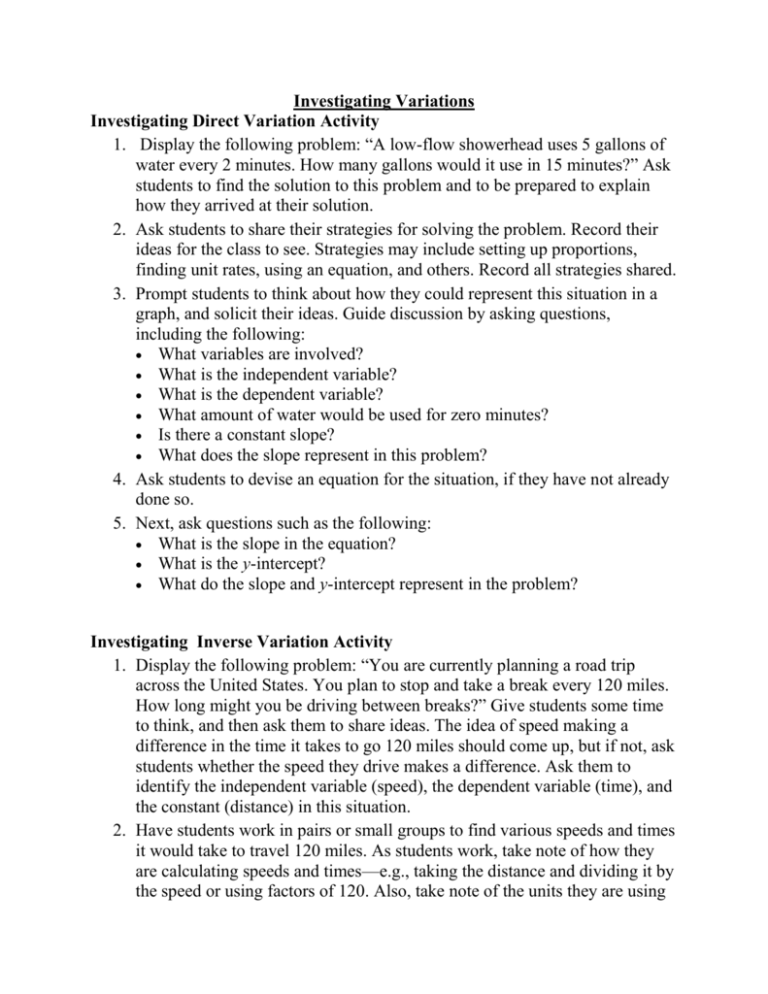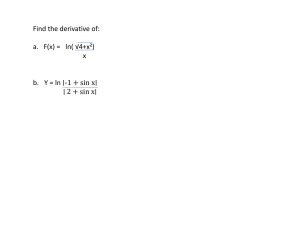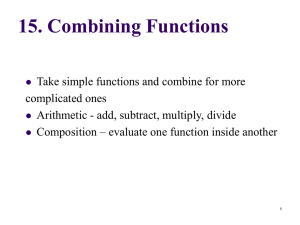Direct & Inverse Variation Activity Worksheet
advertisement

Investigating Variations Investigating Direct Variation Activity 1. Display the following problem: “A low-flow showerhead uses 5 gallons of water every 2 minutes. How many gallons would it use in 15 minutes?” Ask students to find the solution to this problem and to be prepared to explain how they arrived at their solution. 2. Ask students to share their strategies for solving the problem. Record their ideas for the class to see. Strategies may include setting up proportions, finding unit rates, using an equation, and others. Record all strategies shared. 3. Prompt students to think about how they could represent this situation in a graph, and solicit their ideas. Guide discussion by asking questions, including the following: What variables are involved? What is the independent variable? What is the dependent variable? What amount of water would be used for zero minutes? Is there a constant slope? What does the slope represent in this problem? 4. Ask students to devise an equation for the situation, if they have not already done so. 5. Next, ask questions such as the following: What is the slope in the equation? What is the y-intercept? What do the slope and y-intercept represent in the problem? Investigating Inverse Variation Activity 1. Display the following problem: “You are currently planning a road trip across the United States. You plan to stop and take a break every 120 miles. How long might you be driving between breaks?” Give students some time to think, and then ask them to share ideas. The idea of speed making a difference in the time it takes to go 120 miles should come up, but if not, ask students whether the speed they drive makes a difference. Ask them to identify the independent variable (speed), the dependent variable (time), and the constant (distance) in this situation. 2. Have students work in pairs or small groups to find various speeds and times it would take to travel 120 miles. As students work, take note of how they are calculating speeds and times—e.g., taking the distance and dividing it by the speed or using factors of 120. Also, take note of the units they are using 3. 4. 5. 6. for speed and time. (Most will use miles per hour for speed, but they may use hours and/or minutes for time. As they share ideas, they should use hours for consistency and to show the inverse relationship between speed and time.) Have the class share their solutions. Ask them to suggest an effective way to organize the data involved in their solutions. (A table) Ask them to explain why they should use hours and not minutes as the unit for time. (Because the units for speed and time must be comparable in order to see the relationship between them) Some pairs or groups may have fractions of hours for their time. Set up a table with speed as the left column and time as the right. As students share their solutions, record them in the chart for the class to see. Ask students to explain how they arrived at their solutions, and record the strategies in words for the class to see. (You should include the strategies of dividing 120 by the speed and of using factors of 120, as well as any others k offered. This will allow you to make connections to the equation y = x and to emphasize that the speed and time have a constant product, distance, shown by the equation k = xy. You might explain solutions that involve fractions of hours in terms of the first strategy mentioned and whole-number solutions in terms of the second strategy.) Ask students how they could make an equation so that they could easily find any solution to this problem. You may suggest looking at their strategies written in words and deriving equations from them. Once both equations, y = 120 x and 120 = xy, are posted, ask whether these equations are equivalent. Have students explain why. Tell the class that they have just investigated an inverse variation, which is a relationship in which two variables vary inversely, i.e., when one variable increases, the other decreases. This particular inverse relationship can be called an inverse variation because the speed and time values have a constant product, a distance of 120 miles. This constant product makes is possible to create an equation for the inverse variation. All inverse variation k equations are of the form y = x, where k is the constant of variation. Have students compare this equation with the ones they created.








